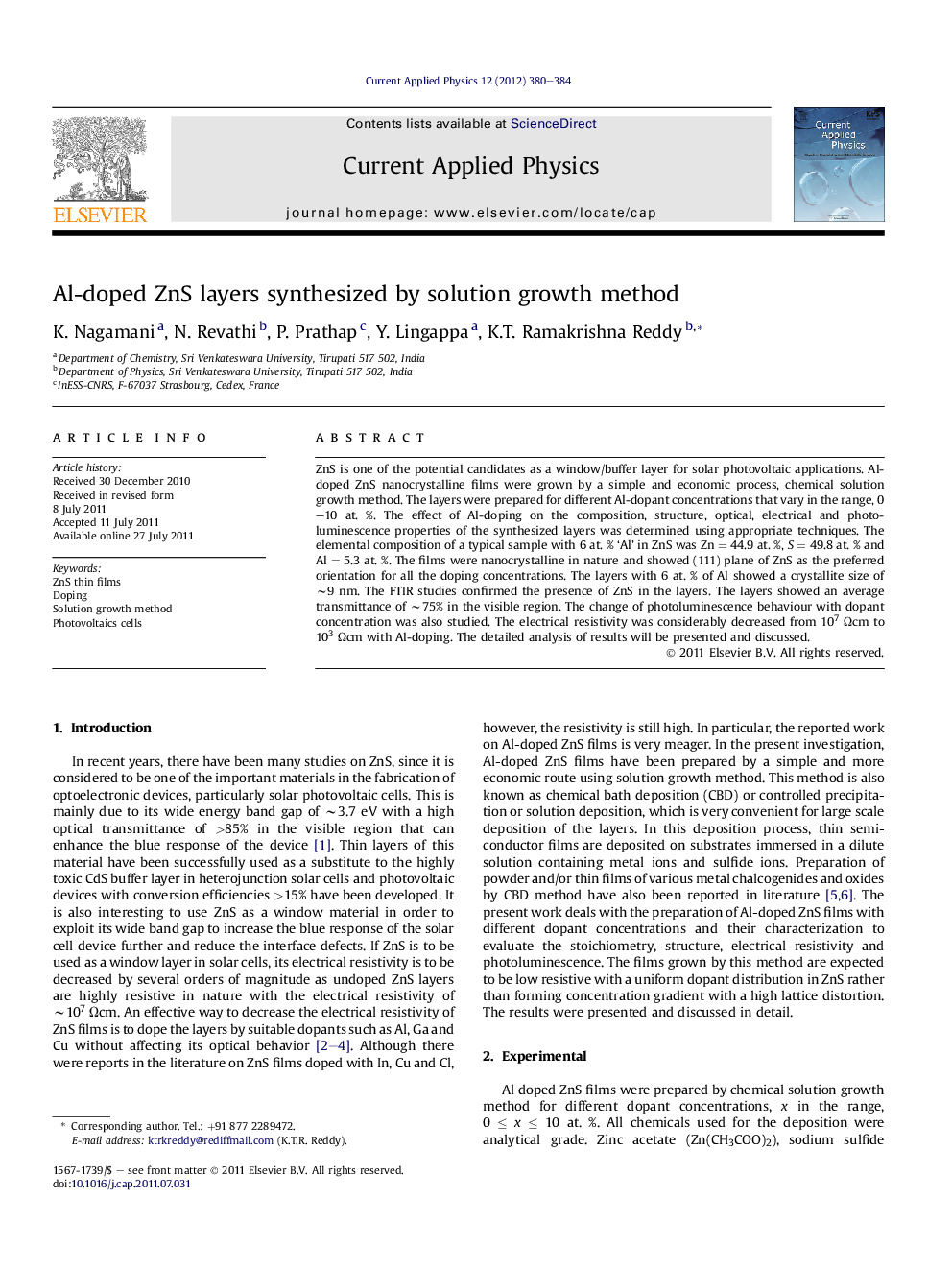| کد مقاله | کد نشریه | سال انتشار | مقاله انگلیسی | نسخه تمام متن |
|---|---|---|---|---|
| 1787059 | 1023430 | 2012 | 5 صفحه PDF | دانلود رایگان |

ZnS is one of the potential candidates as a window/buffer layer for solar photovoltaic applications. Al-doped ZnS nanocrystalline films were grown by a simple and economic process, chemical solution growth method. The layers were prepared for different Al-dopant concentrations that vary in the range, 0–10 at. %. The effect of Al-doping on the composition, structure, optical, electrical and photoluminescence properties of the synthesized layers was determined using appropriate techniques. The elemental composition of a typical sample with 6 at. % ‘Al’ in ZnS was Zn = 44.9 at. %, S = 49.8 at. % and Al = 5.3 at. %. The films were nanocrystalline in nature and showed (111) plane of ZnS as the preferred orientation for all the doping concentrations. The layers with 6 at. % of Al showed a crystallite size of ∼9 nm. The FTIR studies confirmed the presence of ZnS in the layers. The layers showed an average transmittance of ∼75% in the visible region. The change of photoluminescence behaviour with dopant concentration was also studied. The electrical resistivity was considerably decreased from 107 Ωcm to 103 Ωcm with Al-doping. The detailed analysis of results will be presented and discussed.
► Deposition of ZnS:Al films by solution growth method varying Al-doping content.
► Investigation of the physical and chemical properties of annealed ZnS:Al layers.
► Study of photoluminescence in ZnS:Al layers to identify the defect states.
► Formation of ZnS:Al films with low electrical resistivity for solar cell application.
Journal: Current Applied Physics - Volume 12, Issue 2, March 2012, Pages 380–384